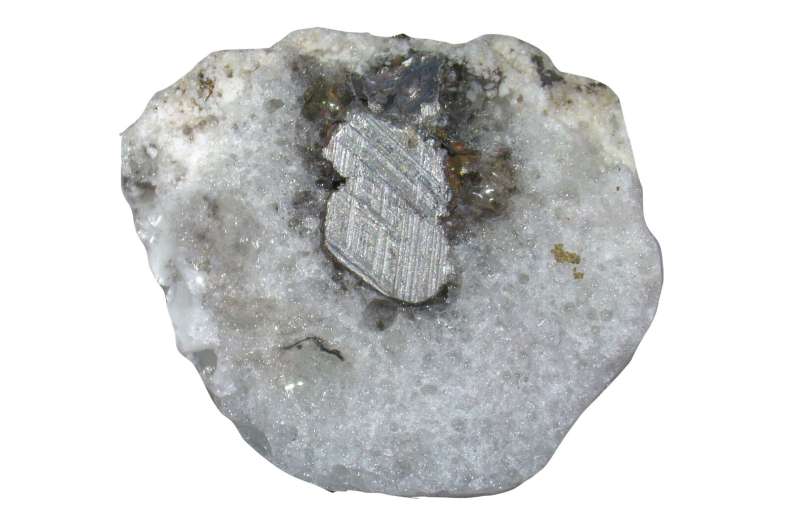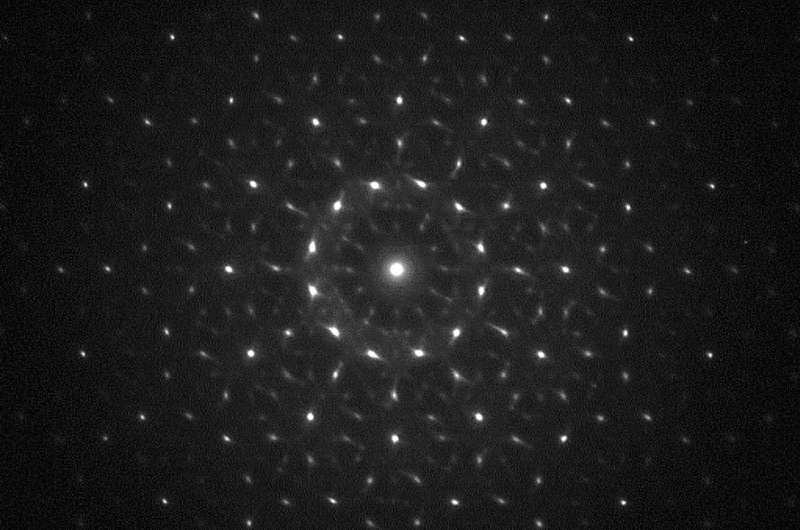21ST CENTURY ALCHEMY
Quasicrystal formed during accidental electrical discharge

A team of researchers from Università di Firenze, the University of South Florida, California Institute of Technology and Princeton University has found an incidence of a quasicrystal formed during an accidental electrical discharge.
In their paper published in Proceedings of the National Academy of Sciences, the group describes their study of a quasicrystal found in a sand dune in Nebraska.
Quasicrystals, as their name suggests, are crystal-like substances. They possess characteristics not found in ordinary crystals, such as a non-repeating arrangement of atoms. To date, quasicrystals have been found embedded in meteorites and in the debris from nuclear blasts. In this new effort, the researchers found one embedded in a sand dune in Sand Hills, Nebraska.
Study of the quasicrystal showed it had 12-fold, or dodecagonal, symmetry—something rarely seen in quasicrystals. Curious as to how it might have formed and how it ended up in the sand dune, the researchers did some investigating. They discovered that a power line had fallen on the dune, likely the result of a lightning strike. They suggest the electrical surge from either the power line or the lightning could have produced the quasicrystal.
The researchers note that the quasicrystal was found inside of a tubular piece of fulgurite, which they suggest was also formed during the electrical surge due to fusing of melted sand and metal from the power line.

In looking at the quasicrystal using an electron microscope, the researchers were able to make out its composition. In so doing, they found bits of silicon dioxide glass, which told them that temperatures inside the sand dune during the electrical discharge had to have reached at least 1,710 degrees Celsius. They also found that the quasicrystal had been retrieved from an area of transition between melted aluminum alloy and silicate glass. Their work confirmed that the object they were studying was, indeed, a quasicrystal, and that it had a previously unseen composition.
The researchers conclude that finding a quasicrystal in such a place suggests that others are likely out there, as well, having formed due to lightning strikes or downed power lines. They also suggest their work could lead to techiniques to create quasicrystals in the lab.
More information: Luca Bindi et al, Electrical discharge triggers quasicrystal formation in an eolian dune, Proceedings of the National Academy of Sciences (2022). DOI: 10.1073/pnas.2215484119
No comments:
Post a Comment